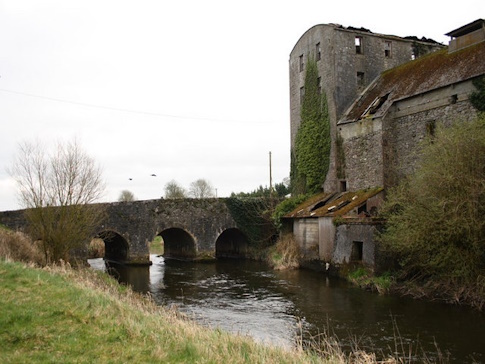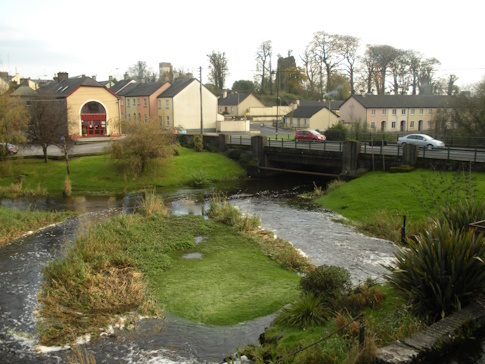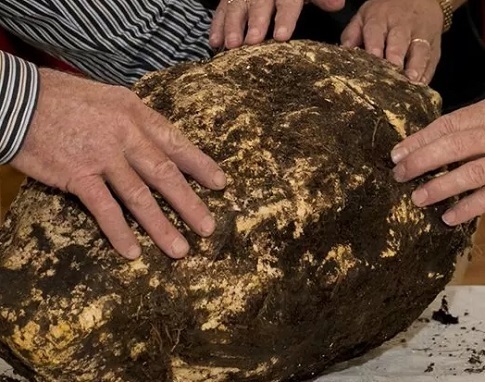5th April - Saint Becan of Emlagh, the priest and the Devil... and bog butter
Written by Anne N 2019 with additions 2023 & 2024.
A Meath saint and said by some to be one of the 12 Irish Apostles. (see Butler's The Lives of the Fathers, Martyrs, and Other Principal Saints, the result of thirty years' study, was first published in four volumes in London, 1756–1759.)
St Becan was a son of Murchade and Cula, of the regal family of Munster, he was a blood relative of Saint Columcille and a contemporary with King Dermot.
He founded a monastery on the River Brosna at Kilbeggan around the beginning of the 7th century.
(Bridge and Old Mill by Kevin Higgins - geograph.org.uk)
 |  |
An old church giving name to the parish Imleach Emlagh is situated about four miles to the north-east of Kells. The parish, Imleach-Becain in Meath was re named after St Becan mac Cula from its original name Imleach Fia.
The word Imleach denotes land bordering on a lake, Becan means small in Irish.
I wonder does it have it's root in Beach -the Irish for Bee.
The old roads of my district lead North, South East and West.East of the bridge which spans the Brosna The Circular Road winds on to the Tullamore road from Kilbeggan road. To the left surrounded by ancient trees of oak and beech the protestant church stands. It was once a Roman Catholic church. In the dark penal days it was confiscated by the crown forces.
Abbot Becan (Saint) came from Mellifont and founded an Abbey on this site in the sixth century. This Abbey was burned, and the Daltons restored it in the ninth century. Nearby is the "Relic" where the long gone generations of the parish lie mouldering to clay. The monks of the Cisterian order trod this place. On the right about 1/4 mile further on is the town land of Barley hill. Close to the river bank in a little nook there is a mass rock in this townland. The "Glebe" is in this vicinity too. Old people say it was a Monastery once.
A little distance from the "Glebe" there was a notorious family of Priest hunters living at one time. Fionowels was the name of this faction. No trace of their dwelling can now be seen or is any of their name or generation living here either, but their memory will never be forgotten, so ill famed was it. This townland is called Toneyfort. They were paid spies and their two dogs, Shep and Tray were trained to smell the blood of the Priest.
Here too they held the "hell fire club." They kept in touch with "ould boy". Once it is told the "devil" actually came and they danced round a fire which they had lighted to invoke him. They had to look for a Priest who advised them to procure a black cat which they did. He prayed and then ordered them to fling the cat at him ("the devil"). It is told the devil caught the cat and flew off with it in a ball of fire. (Mrs Delaneys version). Once they chased a priest across the stick (?) which this day spans the river at the back of the Glebe. Duchas Schools Collection - Kilbeggan, Co. Westmeath
Bog Butter from Emlagh
Butter more than 2,000 years old.

In medieval Ireland they did a lot of burying in bogs as they have excellent preservation properties because of their low temperatures, low oxygen and highly acidic habitat.
They called it a "Gift to the Gods". (10 Kilos of Bog Butter). That butter would normally be found in a wooden box but this butter was found on its own.
The museum believes that this particular butter was therefore buried as a ritual or an offering because whoever buried it thought it would never be found again.
Butter, or anything associated with a cow, was seen as a sign of wealth, importance and was valuable.
"Butter was seen as a luxury item back then. People made it with the intention of eating it, or selling it to pay their taxes and rent,"





